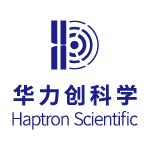High-growth enterprises are competing for force sensing "crown pearl" in the field of domestic enterprises are accelerating the layout.
Release time:
2023-07-22 12:42
Source:
Source
However, as domestic enterprises continue to increase R & D and innovation efforts, many companies have developed multi-dimensional force sensors. Founded in 2019, Haptron Science aims to provide high-performance intelligent sensors based on optical principles for various industries, while integrating vision systems and intelligent control algorithms into "visual-touch" fusion robots to develop overall force control solutions for customers.
Zhiyan Consulting estimates that the number of overseas imported polishing robot products accounts for about 55.9 percent of the total installed capacity, but this proportion has been on a downward trend in recent years. Domestic manufacturers by virtue of price advantages, as well as research and development innovation, is gradually gaining market voice.
More news recommend



